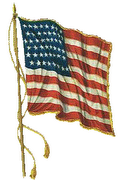Iran Adding Attack Boats in Persian Gulf, U.S. Says
By Tony Capaccio
Iran is increasing its fleet of small attack boats capable of challenging warships and disrupting oil traffic in the Strait of Hormuz, the sea route for two-fifths of the world's daily supply of crude oil, the U.S. Navy says.
Iran's Revolutionary Guard Corps already has more than 1,000 of the speedboats "and continues to add boats armed with anti- ship cruise missiles,'' said Robert Althage, spokesman for the U.S. Office of Naval Intelligence.
"Iran still states that the Iranian Revolutionary Guard Corps will employ swarming tactics in a conflict,'' Althage said in an e-mail. Naval intelligence, in its latest report on threats, said an attack against U.S. forces and commercial tankers "could include over 100 boats in coordinated groups of 20 to 30 approaching simultaneously from multiple axes.''
The U.S. has two carrier groups in the Persian Gulf. The commander of these forces, Vice Admiral Kevin Cosgriff, said the attack boats have "a significant military capability.'' His fear is that Iran's central leadership might not have enough control over this Revolutionary Guard force to ensure against unauthorized attacks.
"I'm fairly comfortable that the regular Iranian navy and air force has a pretty good command-and-control system -- the key word is 'control,''' he said. "I don't have the same sense with the Revolutionary Guard.''
"Is there a rigorous, disciplined chain of command where people pay attention?'' Cosgriff said. "In some instances, the answer would be yes. In other instances I've had some concern that people may be prone to miscalculation.''
"Somebody who gets fired up based on firebrand rhetoric is what I am speaking about,'' he said.
Mines, Torpedoes, Missiles
The boats -- up to 70 feet long and capable of speeds up to 57 miles per hour -- are armed with torpedoes and rocket- propelled grenades as well as cruise missiles and also are used to lay mines. The U.S. estimates Iran has 5,000 sea mines.
Cosgriff and other U.S. naval officers say they can defend against this threat. Still, attacks on tankers and a few sunken ships could disrupt traffic through the chokepoint of the world's most important oil transit route.
Iran launched a much smaller fleet of these attack boats against U.S. ships and U.S.-flagged tankers in the Persian Gulf in late 1987 through mid-1988 after the Reagan administration sided with Iraq in its war with the Islamic Republic.
The ships were able to lay mines, attack ships and disrupt oil traffic. They damaged at least one tanker traveling under the U.S. flag as well as the frigate USS Samuel Roberts.
Cosgriff said the U.S. now has four minesweepers deployed to the Gulf and the British Navy has two. The coalition "routinely'' practices minesweeping and "we are actually quite good at it,'' he said.
Defense Against `Swarming'
Cosgriff, in a telephone interview yesterday from the United Arab Emirates, said the U.S. Navy has "devised various tactics and other ways of coping with'' the swarming tactics of the small attack boats.
In addition, "there are some limitations'' to launching an attack by these boats, he said. "You just don't get 1,000 or 500 or even 20 of anything under way and tightly orchestrated over a large body of water to create a specific effect at a specific time and specific place. They have their own challenges.''
Officers of the aircraft carrier USS Stennis in the Persian Gulf offered similar assurances in onboard interviews June 1.
"We spend a lot of time making sure we have eyes out for that sort of thing,'' said Commander Chris Rentfrow, director of the Stennis's self-defense nerve center.
...
Pertinent Links:
1) Iran Adding Attack Boats in Persian Gulf, U.S. Says
Wednesday, June 06, 2007
Subscribe to:
Post Comments (Atom)




No comments:
Post a Comment